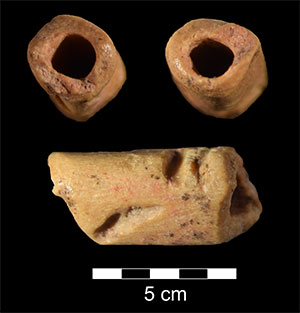News
Oldest known bead in the Americas found in Wyoming by UW archaeology professor


Published
10 months agoon

University of Wyoming archaeology Professor Todd Surovell and his team of collaborators have discovered a tube-shaped bead made of bone that is about 12,940 years old.
The bead, found at the La Prele Mammoth site in Converse County, is the oldest known bead in the Americas.
Surovell’s research was published in the peer-reviewed journal Scientific Reports; the paper is titled “Use of hare bone for the manufacture of a Clovis bead.” Members of the research team included people from UW, the Office of the Wyoming State Archaeologist, the University of Manchester, Weber State University and Chico State University.
During an appearance on Sheridan Media’s Public Pulse, Director of Institutional Communications for the University of Wyoming, Chad Baldwin, said UW archaeologists have been digging at the site for a decade.
C. Baldwin
According to UW, the bead is made from the bone of a hare and this finding represents the first secure evidence for the use of hares during the Clovis period, which refers to a prehistoric era in North America, particularly prominent about 12,000 years ago. It’s named after the Clovis archaeological site in New Mexico, where distinctive stone tools were discovered.
The bead is only about 7 millimeters in length, and its internal diameter averages 1.6 millimeters. The research team considered the possibility that the bead could have been the result of carnivore consumption and digestion and not created by humans; however, carnivores were not common on this site, and the artifact was recovered 1 meter from a dense scatter of other cultural materials.
C. Baldwin
Additionally, the grooves on the outside of the bead are consistent with creation by humans, either with stones or their teeth. Beads like this one were likely used to decorate their bodies or clothing.
To learn more about his research, email him at surovell@uwyo.edu.
